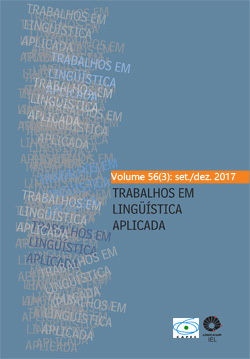Resumen
La propuesta de estrategias de Feedback Correctivo Escrito (FCE) para mejorar la precisión en la escritura requiere de investigaciones que examinen los efectos de recibir versus no recibir FCE en el corto y largo plazo. En este trabajo, se presenta un estudio experimental longitudinal con pre-test/post-test (inmediato y diferido) y grupo control para evaluar la efectividad del FCE indirecto metalingüístico y directo metalingüístico en la disminución de errores en aprendientes de nivel A2 y B1 en ELE. Los errores tratados corresponden a la ortografía acentual, las preposiciones y la concordancia gramatical. Los resultados muestran una mayor efectividad en el FCE indirecto metalingüístico tanto en los niveles de competencia A2 como B1 en el corto y largo plazo.
Citas
BITCHENER, J. (2009). Measuring the effectiveness of written corrective feedback: A response to “Overgeneralization from a narrow focus: A response to Bitchener (2008)”. Journal of Second Language Writing, 18, 276-279.
BITCHENER, J. (2012). A reflection on the ‘language learning potential’ of written CF. Journal of Second Language Writing, 21, 348-363.
BITCHENER, J & FERRIS, D. (2012). Written Corrective Feedback in Second Language Acquisition and Writing. New York: Routledge.
BITCHENER, J., & KNOCH, U. (2009a). The value of a focused approach to written corrective feedback. ELT Journal, 63, 204-211.
BITCHENER, J., & KNOCH, U. (2009b). The relative effectiveness of different types of direct written corrective feedback. System, 37, 322-329.
BITCHENER, J. & KNOCH, U. (2010). The contribution of written corrective feedback to the language development: A ten-month study. Applied Linguistics 31, Nº2, (2010): 193-214.
CHANDLER, J. (2003). The efficacy of various kinds of error feedback for improvement in the accuracy and fluency of L2 student writing. Journal of second language writing, 12(3), 267-296.
CHAUDRON, C. (1977). A descriptive model of discourse in the corrective treatment of learners’ errors. Language Learning, 27, 29-46.
ELLIS, R. (2016). Focus on form: A critical review. Language Teaching Research, Vol. 20, 3, pp. 405 – 428.
ELLIS, R (2009). Cognitive feedback and teacher development. L2 Journal, 1, 3-18.
ELLIS, R. (2008). A typology of written corrective feedback types. ELT Journal. 63, 97-107.
ELLIS, R., SHEEN, Y., MURAKAMI, M., & TAKASHIMA, H. (2008). The effects of focused and unfocused written corrective feedback in an English as a foreign language context. System, 36(3), 353-371.
FERRIS, D. (2004). The “grammar correction” debate in L2 writing: Where are we, and where do we go from here? (and what do we do in the meantime…?). Journal of second language writing, 13(1), 49-62.
FERRIS, D. (2010). Second language writing research and written corrective feedback in SLA Intersections and Practical Applications. Studies in Second Language Acquisition, 32, 181-201.
FERRIS, D. (2012). Written Corrective Feedback in Second Language Acquisition and Writing studies. Language Teaching , 45(4), 446-459.
FERRIS, D. & ROBERTS, B. (2001). Error feedback in L2 writing classes: How explicit does it need to be?. Journal of second language writing, 10(3), 161-184.
Hyland, K. & Hyland, F. (2006). Feedback on second language students’ writing. Language Teaching , 39(2), 83-101.
LONG M. & ROBINSON P. (1998). Focus-on-form: Theory, research and practice. In: Doughty C., Williams J.(Eds.), Focus-on-form in classroom second language acquisition (pp. 15–41). Cambridge: Cambridge University Press
LOEWEN, S. (2012). The role of feedback. In S. Gass & A. Mackey (Eds.), The Routledge Handbook of Second Language Acquisition (pp.24 -40). Abingdon: Routledge.
SHEEN, Y. (2007). The effect of focused written corrective feedback and language aptitude on ESL learners' acquisition of articles. Tesol Quarterly, 41(2), 255-283.
SHEEN, Y. (2011). Corrective Feedback Individual Differences and Second Language Learning. New York: Springer.
SCHMIDT, R. (2010). Attention, awareness, and individual differences in language learning. In W. M. Chan, S. Chi, K. N. Cin, J. Istanto, M. Nagami, J. W. Sew, T. Suthiwan, & I. Walker, Proceedings of CLaSIC 2010, Singapore, December 2-4 (pp. 721-737). Singapore: National University of Singapore, Centre for Language Studies.
VAN BEUNINGEN, C. (2010). Corrective feedback in L2 writing: Theoretical perspectives, empirical insights, and future directions. International Journal of English Studies, 10(2), 1-27.

Esta obra está bajo una licencia internacional Creative Commons Atribución 4.0.
Derechos de autor 2019 Trabalhos em Linguística Aplicada

